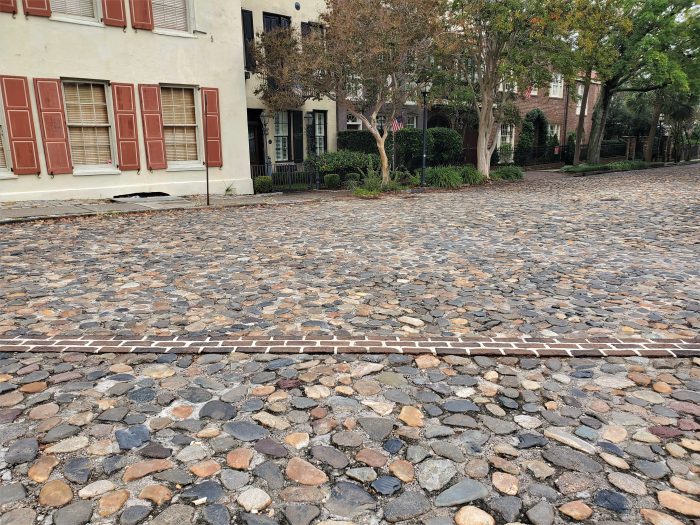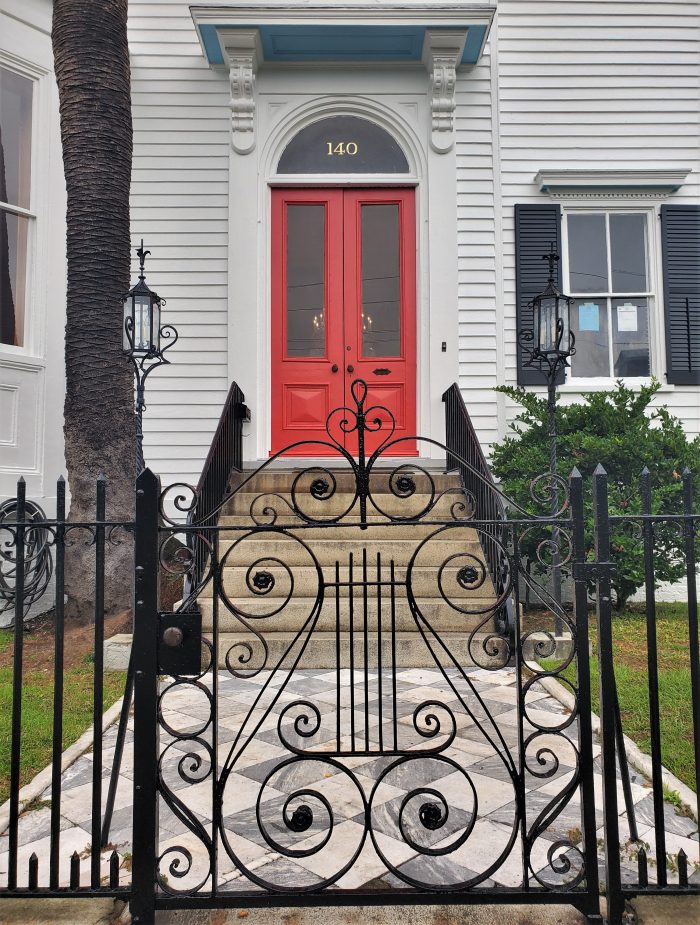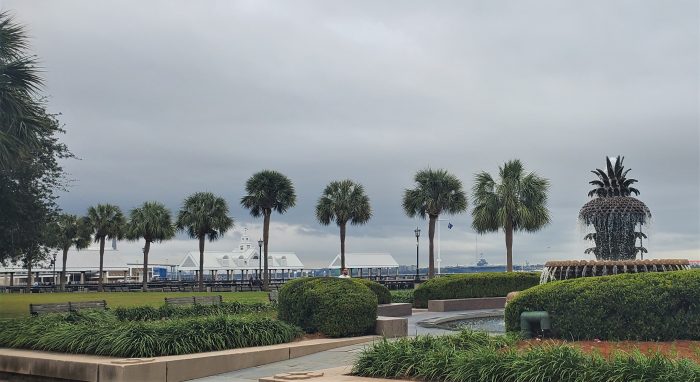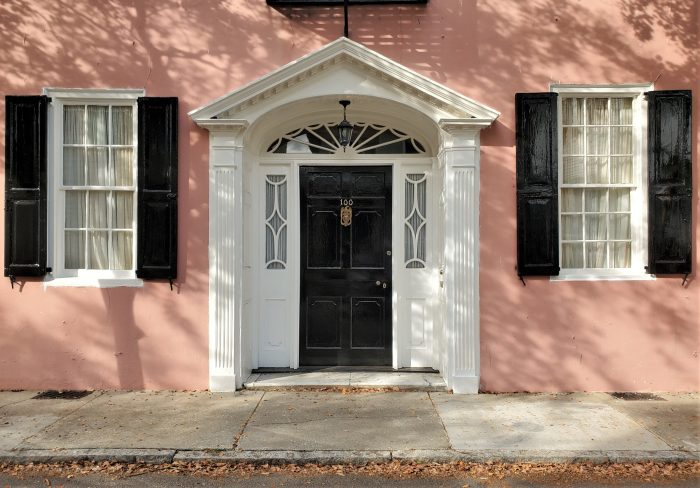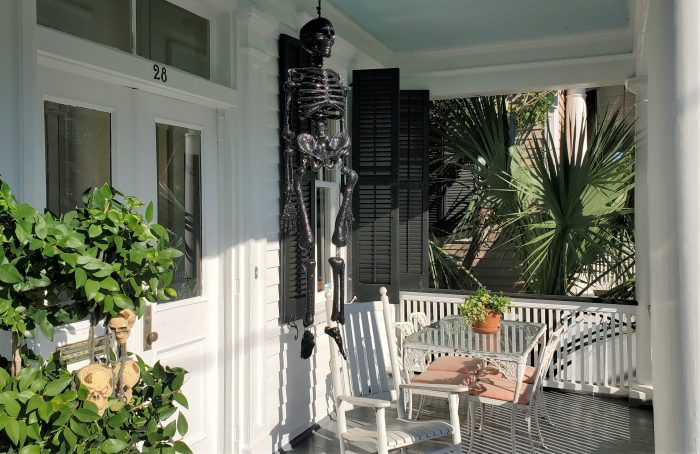Charleston is one of the few cities in North America to ever have been a walled city. In the early 1700’s, the wall protected the residents from everything from pirates to the Spaniards and French. While the wall has been mapped, there are only a few spots where you can actually see its remnants. The brick line here, across the cobbles of North Adgers Wharf, represents where the wall crossed at that point — and if you dig down you will find it (but do not do that without permission and proper archaeological processes!)
Fire!
This beautiful gate, walk and fire-red door can be found in an impressive house on Broad Street. The house, built c. 1870, replaced an earlier one owned by the same man which burned down in the Great Fire of 1861 (which claimed over 575 other houses and more).
Waterfront Park
A view across Joe Riley Waterfront Park. In the distance you can see the WWII aircraft carrier the USS Yorktown, a storied fighting ship.
The Bell Tolls
During the Civil War, the bells in the towers of First Scots Presbyterian Church were donated to the military effort. It was not until 1999 that a new bell was installed in the north tower, seen here. (It’s actually a bell made in 1814, but new to First Scots.) The south tower still does not have bells, as it is not structurally sound enough (no pun intended) to bear their weight.
A Room That Used To Have A View
The Parker-Drayton House on Gibbes Street was built in about 1806 and had a water view for about 100 years. In the early 1900’s land was reclaimed from the Ashley River and its marshes to form the current Charleston peninsula — placing two blocks of land and houses between Gibbes Street and the Low Battery. While the house has beautiful gardens and Gibbes is a great street, the water view is no more.
Poinsett
This impressive window box is on the building that housed the Poinsett Tavern on Elliott Street, built about 1732. Poinsett’s descendant was the US ambassador to Mexico who introduced the Poinsettia to the United States.
Pretty In Pink
This pretty house on Tradd Street was built in 1740… pre-revolutionary beauty.
Ivy and Quoins
The toothy trim on this Queen Street house is called quoins. Quoins are found on many Charleston masonry and stucco buildings. The quoins usually serve two purposes — to strengthen the construction and for decoration. Here they are complemented by some very well trained ivy.
Nightmare on Limehouse Street
This pretty 1870 house is looking ready for Halloween. Located on Limehouse Street, it is just up from the remains of the old seawall. On the other side of the wall the houses were built on reclaimed land in the early 1900’s.
Haint Blue
The blue color on the ceiling of this Charleston porch is intended to ward off evil spirits known as “haints.” Apparently, it is ineffective against sparkly skeletons or skulls.
- « Previous Page
- 1
- …
- 54
- 55
- 56
- 57
- 58
- …
- 188
- Next Page »
